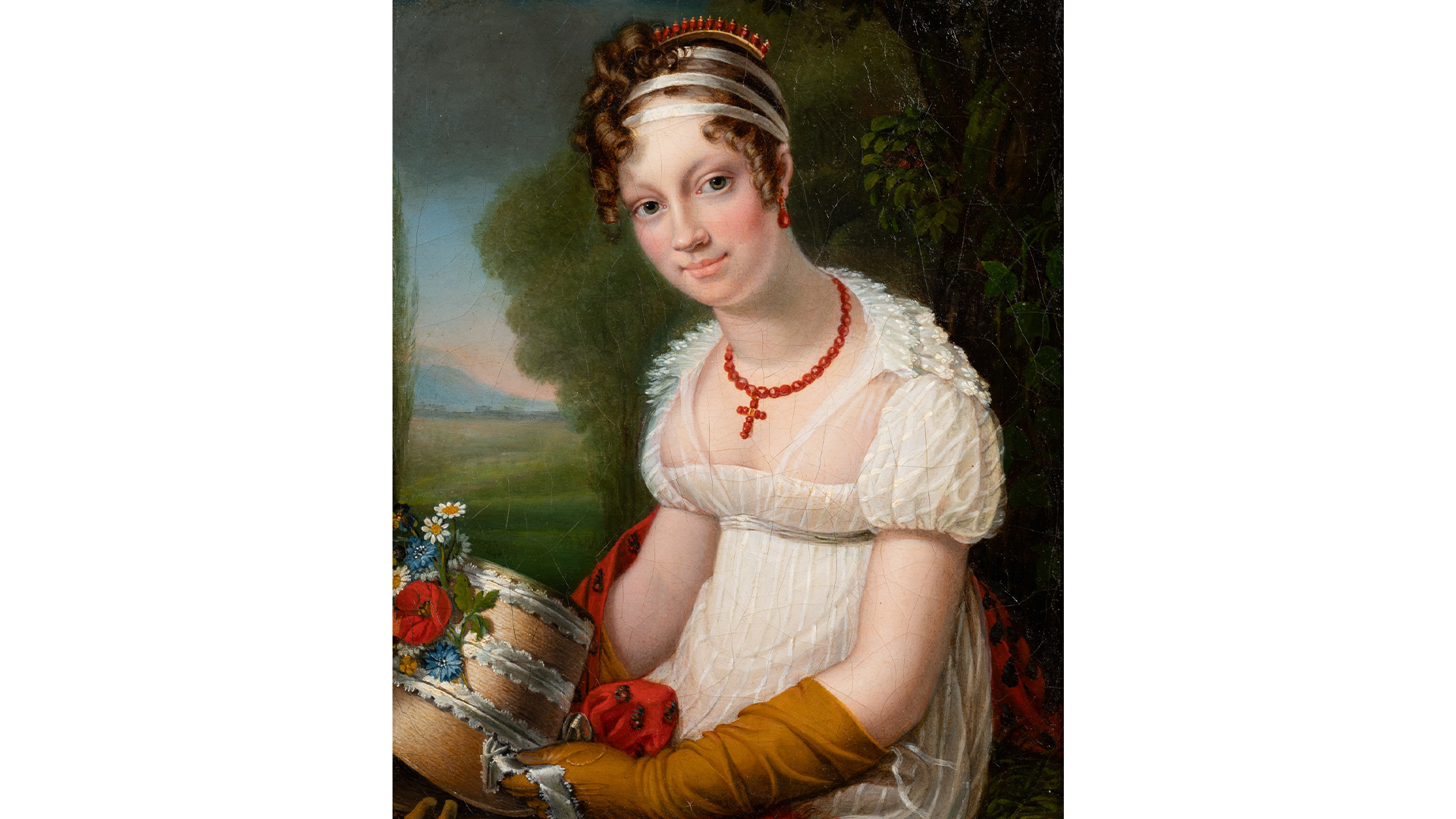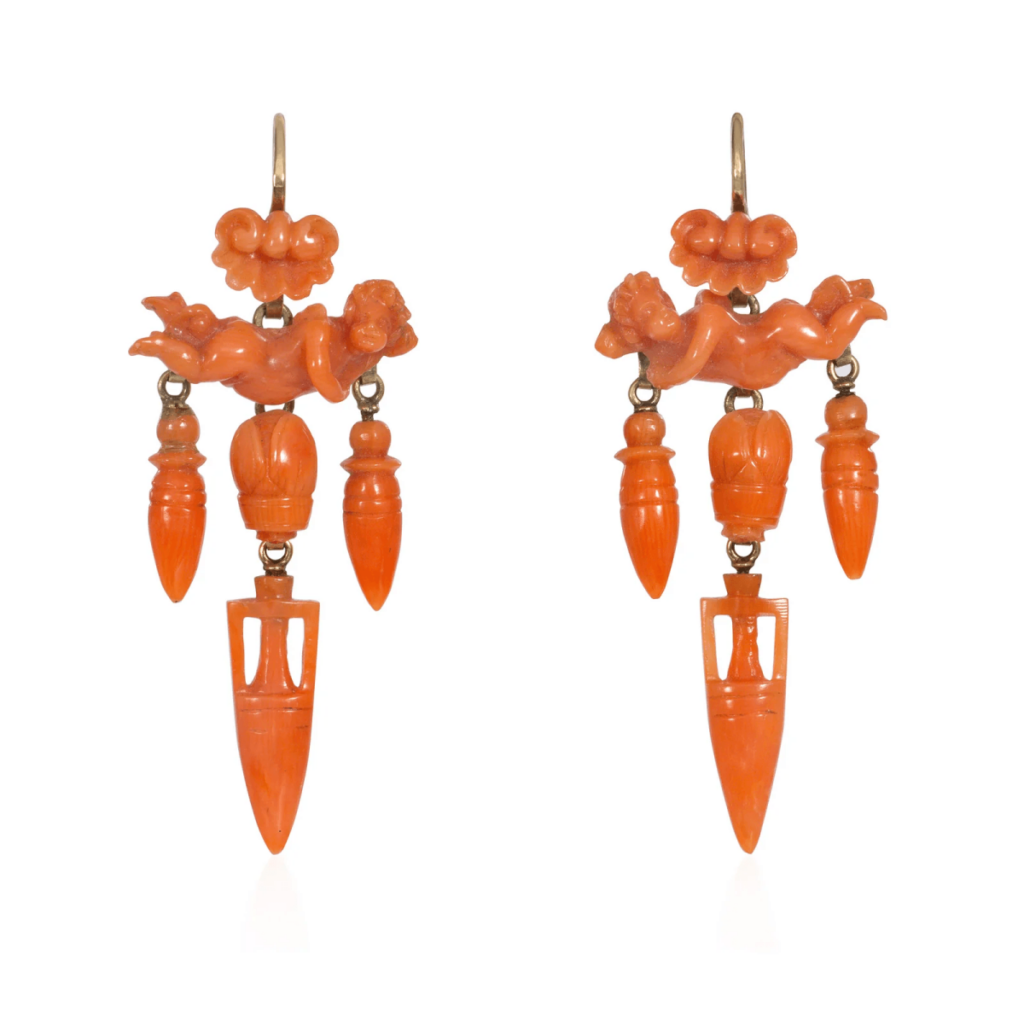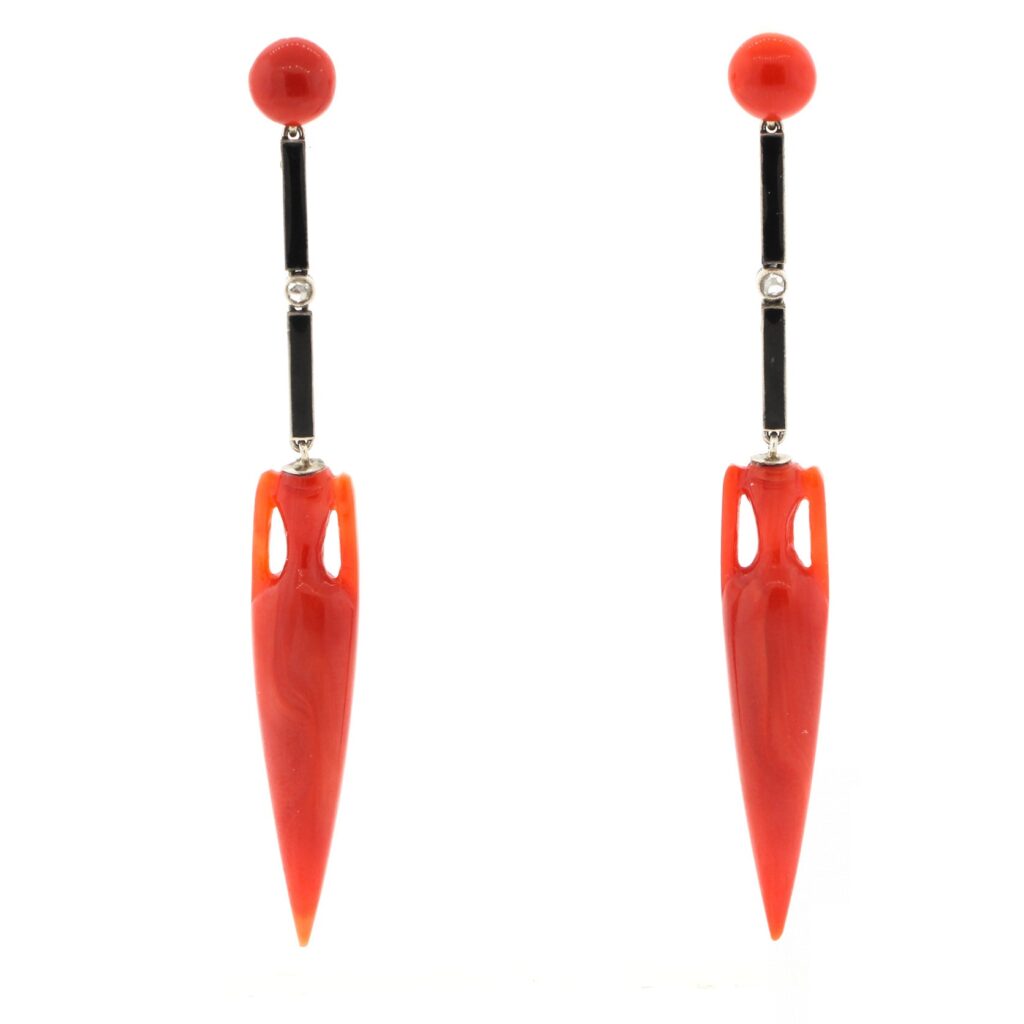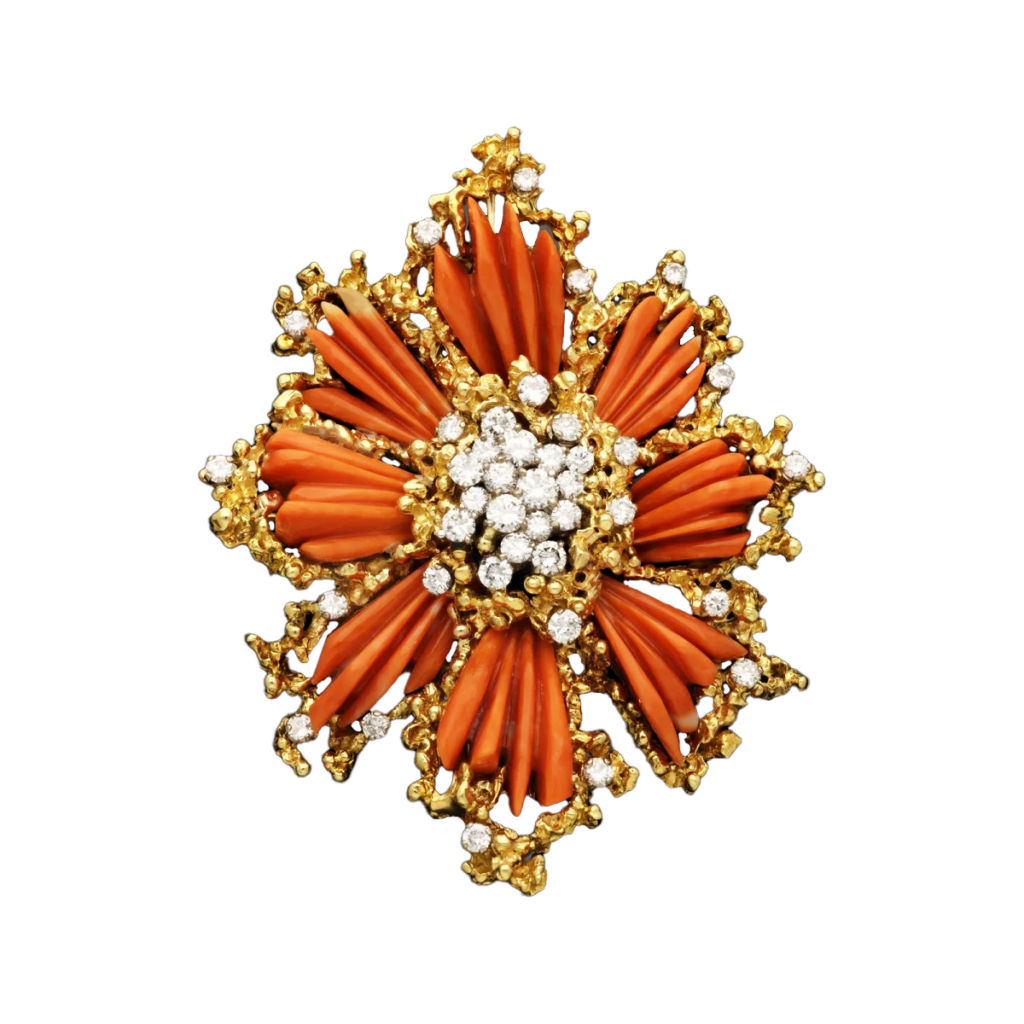According to ancient Greek legend, when Perseus beheaded the gorgon Medusa, he put her head down on the sandy beach and as the blood ran out it turned the seaweed to coral. The ancient Romans believed that coral made the oceans calmer. Throughout Europe, coral was considered protective especially for children and it was commonly used as an amulet, particularly the natural coral branches.
Coral was found in Egyptian tombs and prehistoric European burial sites, so we know coral has been used in jewelry for millenia. And throughout time, coral has been desired for its color, which can be red, orange, or pale pink and talismanic qualities, reaching the peak of popularity during the early Victorian era, from the 1840s until midway through the 1860s.
Coral and the Grand Tour
Coral is found in a number of places, including the Mediterranean sea. With its proximity to the sea, Italy, especially Genoa and Naples, were leaders in making coral jewelry. Skilled artisans carved the gem into flowers, hands, leaves, cameos, crosses, figurines and beads. Italy was an important stop for tourists on the Grand tour of Europe and they eagerly snapped up coral jewelry as a souvenir from their trip. Wearing coral jewelry showed worldliness and sophistication.
Coral and Art Deco
During the second half of the Victorian era, coral was not as desired, but it had a resurgence of popularity during the Art Deco era when the vibrant orange color was an important part of the color palette, juxtaposing with black enamel, onyx, or lapis lazuli and diamonds for dramatic effect. Some Art Deco designs drew upon Asian influences and coral was often a part of the composition of those pieces, adding an exotic flair to a jewel.
Coral Comes Back
The orange gem fell out of favor again for a couple of decades before making a comeback in jewelry during the 1960s and 1970s. During those decades people were looking for more casual jewelry to wear during the day and coral with its bold color and high gloss has a quiet, understated chic that was perfect for that time. The smoothness of coral also looks especially good with textured gold which was very much in style during those years.
What is Coral?

Coral is a tiny spineless marine polyp with a soft body and external skeleton made of calcium carbonate. However it is not the living organisms that are used in coral jewelry, instead it is the carbonate structures they live on that are necessary for their survival that are used in jewelry production. While coral was at one time plentiful, pollution, warming waters and over harvesting have hurt the supply. There are over 7,000 species of coral, most of which are not used in jewelry, only precious coral is used in jewelry and only about 10 corals fall into that category. Those corals are all in the Corallidae family and are much deeper in the water than other corals.
Common corals, including reef corals, are generally not used in precious jewelry and are more likely to be considered endangered by CITES, the Convention on International Trade in Endangered Species of Wild Fauna and Flora, which is an international agreement among governments aimed at ensuring that international trade in specimens of wild animals and plants does not threaten species’ survival. Of course the best way to make sure that your coral jewelry is sustainable is to buy vintage pieces, that way nothing new needs to be harvested.
Top of Page: Oil on canvas, portrait of Marie Charlotte Georgette Nizon de Saint-Georges, wearing a coral necklace, circa 1807-1809, by Jenny Berger-Sesoras, public domain, courtesy WikiCommons.
Authored by Amber Michelle



